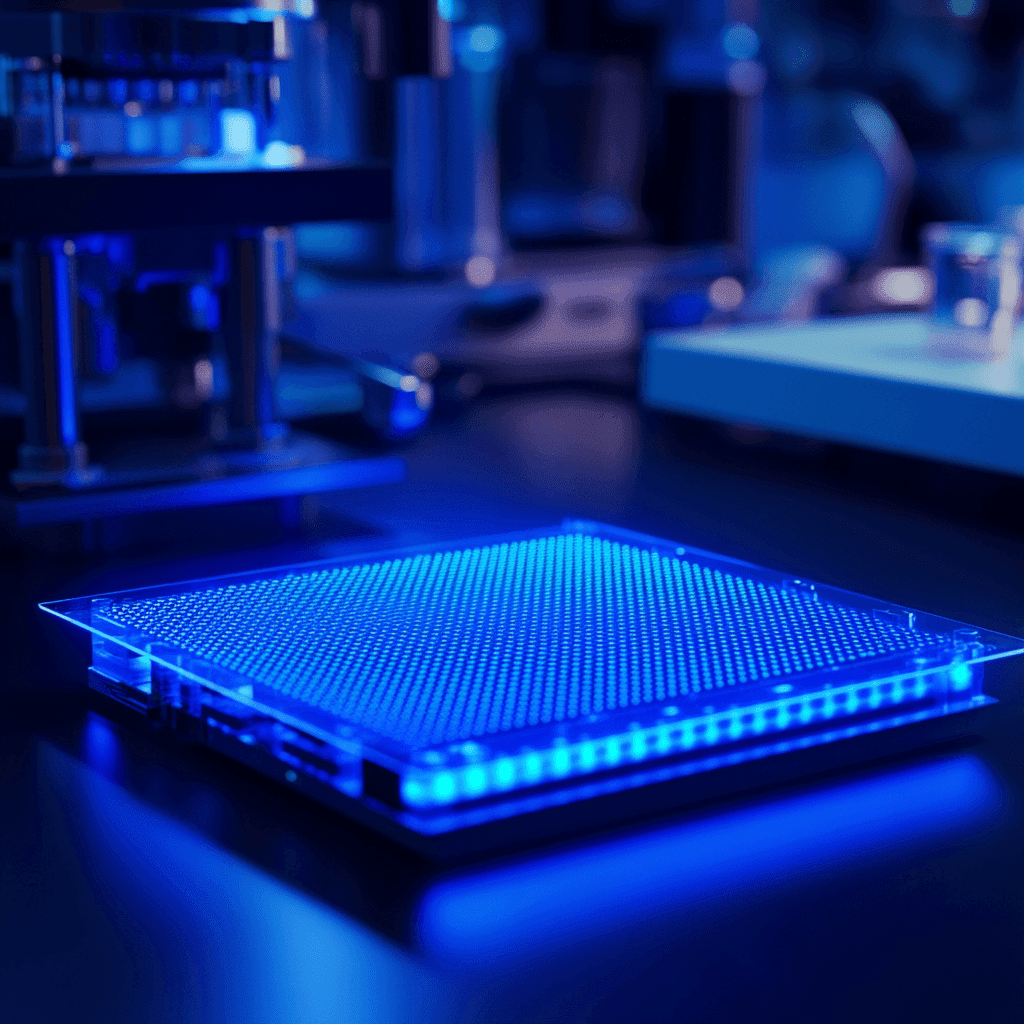
Data centers consumed 4.4% of U.S. electricity in 2023 and are estimated to use up to 12% by 2028. The majority of the energy data centers suck up is used to help transfer data from chip to chip. A company called Hyperlume is looking to make that process more energy-efficient while also speeding it up.
Ottawa, Canada-based Hyperlume created a version of microLEDs that can transfer information faster than the copper-based connections commonly found between the racks in data centers. These microLEDs also require less energy to transfer data than copper wires.
Hyperlume co-founder and CEO Mohsen Asad told TechCrunch that the company was a “logical extension” of the work he and his co-founder Hossein Fariborzi were doing before founding the company. Asad’s background in electrical engineering led him to a career focused on figuring out ways to transfer data between chips and between racks. Fariborzi has expertise in low-power electrical circuit design.
“I was working on microLEDs, I was working in data transfer, and this boom of AI and the requirements for sending information from chip to chip, power consumption — all things came together naturally,” Asad said. “We found a huge market opportunity.”
Energy consumption and latency have always been problems for chip-to-chip communication in data centers, Asad said, but they’ve been exacerbated by the rise — and breakneck pace — of AI. Solving the latency issue, or data delay, will not only speed up existing links between chips but also unlock chip capacity that wasn’t previously accessible due to the latency bottlenecks, Asad added.
“If we can solve this latency issue practically, we make [chips] work faster together,” Asad said. “When you have large language models […] you need the chips to communicate with almost zero latency.”
When Asad and Fariborzi started Hyperlume in 2022, they began by thinking about how to tackle the data center latency problem using existing technology. Silicon was a potential option to connect chips but too expensive to use at scale. Lasers were similarly cost-prohibitive.
So Hyperlume settled on taking cheap microLEDs and retrofitting them to transfer information from chip to chip very quickly, almost mimicking what a fiber optic connection could do without the associated costs.
“The secret sauce is ultra-fast microLEDs and on the other side a low-power ASIC that drives everything and communicates with other chips,” Asad said.
Hyperlume is working with a handful of early customers — most in North America — for the time being while it fine-tunes its product. The company has received a lot of inbound interest, especially from hyperscalers, Asad said, in addition to cable manufacturers and firms in other industries that could benefit from the tech.
“The first stage for us is to work with those early adopters — as soon as the technology is proven and goes inside of data centers with those early adopters, it’s going to give us a chance to scale to work with the rest of the market,” Asad said. “The demand is there and is growing and growing every year.”
Hyperlume recently raised a $12.5 million seed round led by BDC Capital’s Deep Tech Venture Fund and ArcTern Ventures with participation from MUUS Climate Partners, Intel Capital, and SOSV, among other backers.
The new capital will be used to hire more engineers and build up the funds needed to continue developing Hyperlume’s tech so it (ideally) lands in the hands of more customers soon. In the future, the company wants to scale up its bandwidth so it’s technologically ready for the next generation of powerful data centers.
“Right now we are focused on optical connections, to connect chips together, to connect boards together, but the way that we see the company growing is that it is going to be an AI connectivity solution provider,” Asad said.





